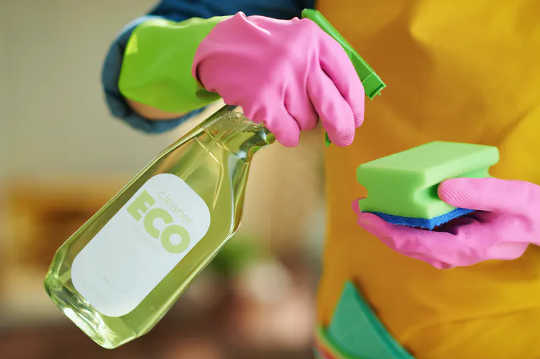
Shutterstock/Alliance Images
I’m seeing quite a few “climate-friendly” products at the supermarket. Are consumers willing to pay more for these? And how can we encourage people to make good choices?
Shoppers once selected grocery products based simply on price or brand, but now attributes such as “climate-friendly” or “eco-friendly” are part of the consideration.
The latest IAG New Zealand Ipsos poll found almost four out of five people (79%) say climate change is an important issue for them, the same number as last year’s poll.
An international study of 20,000 customers by grocery brand giant Unilever identified one in three (33%) people were choosing to buy from brands they believe are doing environmental good.
But research continues to show few consumers who report positive attitudes toward eco-friendly products actually follow through with their wallets.
Green, eco-friendly, climate-friendly products — confused?
Colloquially, use of the word “green” is applied broadly to almost everything related to benefiting the environment, from production and transportation to architecture and even fashion.
Eco-friendly isn’t quite so broad and defines products or practices that do not harm the Earth’s environment.
Climate-friendly defines products that reduce damage specifically to the climate.
All these terms are used in labelling to make us feel good if we buy products claimed to minimise harm to the planet and the environment.
Some brands are even moving beyond simply eco-friendly and now seek to claim their products are climate-neutral.
 Even toys can get the climate-friendly treatment. Flickr/Justin Hall, CC BY
Even toys can get the climate-friendly treatment. Flickr/Justin Hall, CC BY
On Earth Day 2020, the organisation Climate Neutral — an independent non-profit organisation working to decrease global carbon emissions — confirmed 103 brands had completed its certification process in 2020 and 50 other brands were still in the process.
Who says it’s up to standard?
While companies are increasingly using environmental claims to appeal to consumers, they also attract greater scrutiny.
Concerned about allegations of greenwashing — claiming a product is green when it’s not — many brands are turning to organisations such as Climate Neutral, Foundation Myclimate and members of the Global Ecolabelling Network to legitimise their claims.
For example, the climatop label certifies products that generate significantly less greenhouse gas than comparable products. The carbon footprints of the certified products are based on international standards (ISO 14040) and verified by an independent expert.
Environmental Choice New Zealand is the official environmental label body that awards certificates and lists environmentally friendly products for green homes or businesses. Products must meet similar standards (ISO 14020 and ISO 14024). Good Environmental Choice Australia is a similar organisation.
{vembed Y=bpc3Y9NgDus}
A willingness to pay for eco-friendly products
For years, researchers have examined climate-oriented consumption to see if it wins people’s support.
Reports such as Nielsen Insights suggest the majority (73%) of consumers would change their consumption habits to reduce their impact on the environment, and almost half (46%) would switch to environmentally friendly products.
But the results should be interpreted cautiously. As US psychologist Icek Ajzen wrote:
Actions, then, are controlled by intentions, but not all intentions are carried out …
Consumer concern about the environment does not readily translate into the purchase of environmentally friendly products. Commercial research says 46% of consumers are more inclined to buy a product if it is eco-friendly. But nearly 60% are unwilling to pay more money for that eco-friendly product.
Academic research has consistently identified this gap between purchase intentions and behaviours. Hence, despite environmental concern and the positive attitude of customers towards sustainability and green products, it’s estimated the market share of green products will reach only 25% of store sales by 2021.
Ultimately, the research that evaluates consumers’ willingness to pay more for green products has been mixed.
For example, one study found Spanish consumers were willing to pay 22–37% more for green products, but Japanese consumers were only willing to pay 8–22% more for green products.
Why green products cost more
From procuring raw materials to shipping the final product, almost all steps of the manufacturing and production process of eco-friendly products cost more than traditional products.
There are several reasons for this. Sustainable materials cost more to grow and manufacture, reputable third-party certifications add further costs and using organic materials is more expensive than alternatives such as mass-produced chemicals.
Simple economies of scale also impact on price. While the demand for such products remains low, the price remains high. More demand would mean more production and lower unit price costs.
As economists say, as price lowers, our willingness and ability to buy an item increase.
The nudge to change behaviour
In a free market economy, it is very difficult to force people to pay more for products. But brands can “nudge” consumers towards more eco-friendly products.
{vembed Y=xoA8N6nJMRs}
Richard Thaler - Nudge: An Overview
Nudge theory is used to understand how people think, make decisions and behave. It can be used to help people improve their thinking and decisions.
Studies show eco-friendly logos and labels can be used to nudge consumers toward sustainable fashion, food consumption and eco-friendly offerings.
So while not all consumers will pay more for green “climate-friendly” products despite the best of intentions, we can slowly nudge them to make better choices for the planet.![]()
About the Author
Gary Mortimer, Professor of Marketing and Consumer Behaviour, Queensland University of Technology
This article is republished from The Conversation under a Creative Commons license. Read the original article.

Related Books:
Atomic Habits: An Easy & Proven Way to Build Good Habits & Break Bad Ones
by James Clear
Atomic Habits provides practical advice for developing good habits and breaking bad ones, based on scientific research on behavior change.
Click for more info or to order
The Four Tendencies: The Indispensable Personality Profiles That Reveal How to Make Your Life Better (and Other People's Lives Better, Too)
by Gretchen Rubin
The Four Tendencies identifies four personality types and explains how understanding your own tendencies can help you improve your relationships, work habits, and overall happiness.
Click for more info or to order
Think Again: The Power of Knowing What You Don't Know
by Adam Grant
Think Again explores how people can change their minds and attitudes, and offers strategies for improving critical thinking and decision making.
Click for more info or to order
The Body Keeps the Score: Brain, Mind, and Body in the Healing of Trauma
by Bessel van der Kolk
The Body Keeps the Score discusses the connection between trauma and physical health, and offers insights into how trauma can be treated and healed.
Click for more info or to order
The Psychology of Money: Timeless lessons on wealth, greed, and happiness
by Morgan Housel
The Psychology of Money examines the ways in which our attitudes and behaviors around money can shape our financial success and overall well-being.























